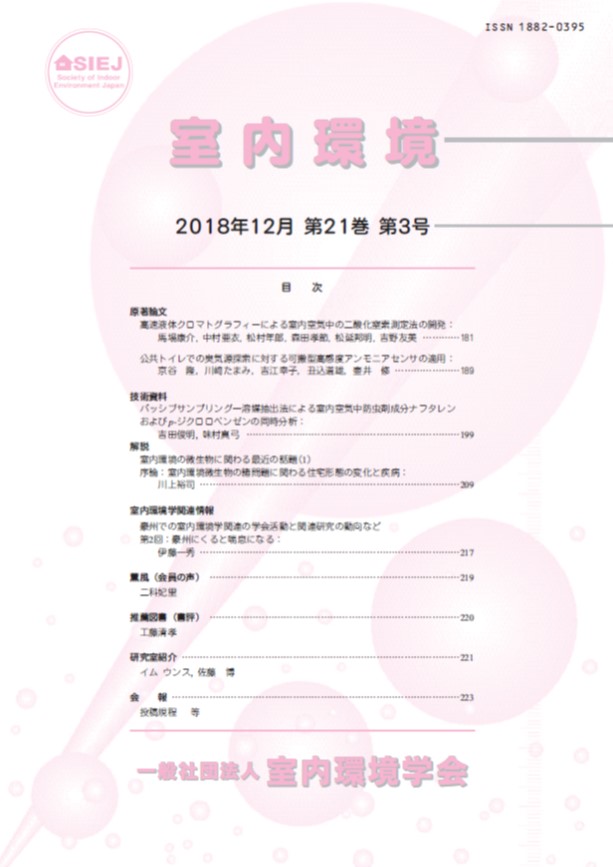Volume 21, Issue 2
Displaying 1-5 of 5 articles from this issue
- |<
- <
- 1
- >
- >|
Review
-
2018 Volume 21 Issue 2 Pages 113-120
Published: 2018
Released on J-STAGE: August 01, 2018
Download PDF (1003K)
Commentary
-
2018 Volume 21 Issue 2 Pages 121-128
Published: 2018
Released on J-STAGE: August 01, 2018
Download PDF (1333K) -
2018 Volume 21 Issue 2 Pages 129-138
Published: 2018
Released on J-STAGE: August 01, 2018
Download PDF (1910K) -
2018 Volume 21 Issue 2 Pages 139-143
Published: 2018
Released on J-STAGE: August 01, 2018
Download PDF (1856K)
Indoor Environmentology Pooftah
-
2018 Volume 21 Issue 2 Pages 145-146
Published: 2018
Released on J-STAGE: August 01, 2018
Download PDF (670K)
- |<
- <
- 1
- >
- >|
